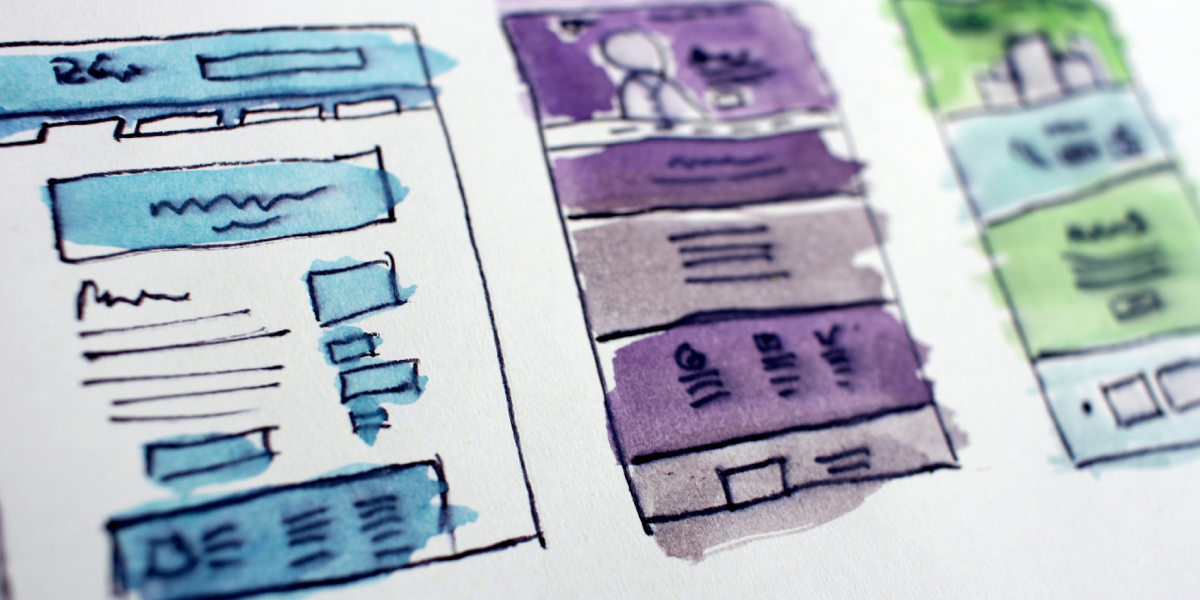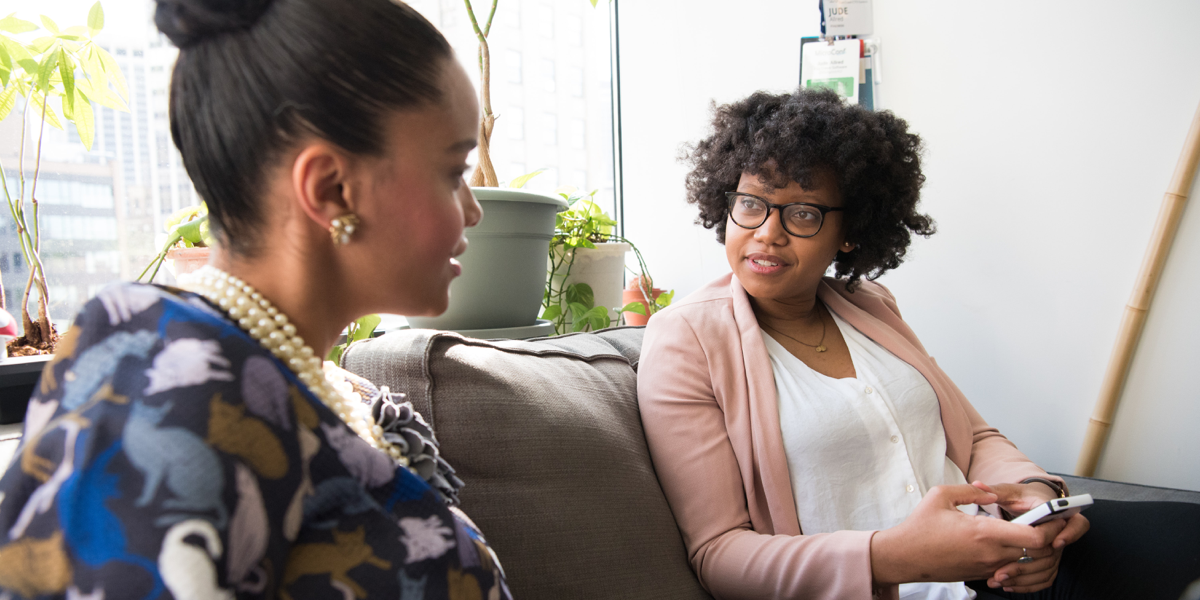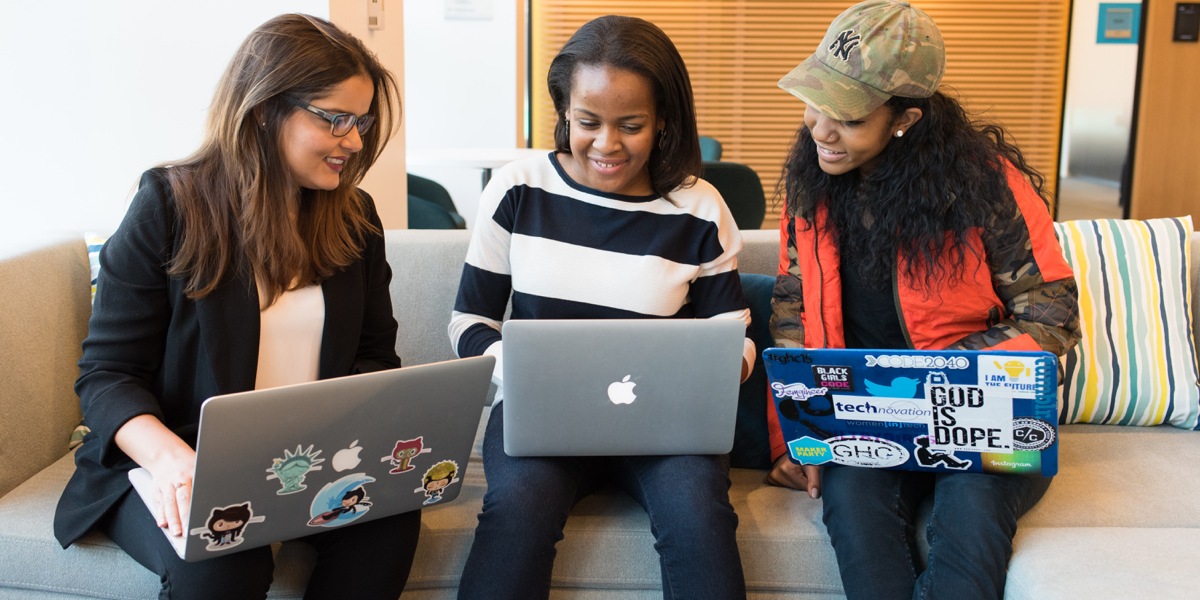So you want to pursue a career in UI design, but there’s just one tiny issue holding you back: you have absolutely no idea how to start UI designing.
You’re not alone. With so much information out there, it’s impossible to know which way to turn. To make matters worse, UI is often confused with UX, so you need to make sure you’re not being pulled in the wrong direction.
The good news is you don’t need loads of qualifications to get started in UI design—just a passion for the industry and a solid plan of action.
Once you know exactly what a role in UI involves, you’re ready to go. Follow our nine-point plan and you’ll be off to the best possible start in the industry.
To jump to a specific section, just use the clickable menu:
- Immerse yourself in UI
- Master the fundamentals
- Get to grips with industry standard tools
- Do a bootcamp course
- Find a mentor
- Build your portfolio
- Get connected
- Pick up some experience
- Consider your next move
How to get started in UI Design
If you prefer a video approach, in this video Sarah, one of the in-house student advisors on our complete UI Design Program, walks you through the above steps. Prefer just to read? Then keep on scrolling!
1. Immerse yourself in UI
As a starting point, there’s plenty you can do to immerse yourself in the world of design. At this stage, it’s all about familiarizing yourself with the industry, so try to absorb as much as possible.
Read UI design blogs, keep an eye on industry trends, experiment with different tools, and follow inspirational accounts on Twitter and Instagram, such as UX / UI Wireframes and UI trends.
Endeavor to do something UI-related each day, even if it’s just reading a blog article or getting inspired with a UI design Pinterest board.
You’ll soon get a firm handle on the industry and start developing your own ideas and approaches as a budding UI designer.
2. Master the fundamentals
To become a UI designer, you first need to master the necessary skills. While it’s true that you don’t need a university degree or a specific qualification, you do need a structured approach.
Blog posts are ideal for background research and complementary reading, but if you’re looking to get stuck in, a short course might be the way to go.
Luckily, there is a multitude of online UI design courses that will equip you with the practical skills and design approach that will get you hired in today’s workplace—including bite-sized free lessons on Youtube or Skillshare that will see you dip your toes into the basics before you make a sizeable investment.
To find out more, check out our roundup of the 7 best online courses to learn UI design in 2024.

3. Get to grips with industry standard tools
From wireframing tools to prototyping software, every UI designer needs to know their way around industry standard design tools. Regardless of what route you’ve opted to go down, you’ll need to start familiarising yourself with tools such as Sketch, and Figma in order to create your designs.
Start by getting a license or free trial for at least one of the most common tools, and playing around with the features. Luckily, there are a bunch of tutorials for these tools on Youtube—or keep your eyes peeled for webinars and workshops that introduce the tool in more depth.
4. Do a bootcamp course
If you’re looking for a reliable option that will see you land a job as a UI designer within a year, a career change bootcamp course might be for you. By focusing on high-impact learning and practical, real-world projects, bootcamps fuse fundamental UI design theory with the industry skills that are in high demand.
The result? A comprehensive, well-rounded learning experience that will take you from total beginner to qualified UI designer.
A good UI design course will see you graduate with a fully fledged portfolio of top-tier work, and support you throughout your journey with your very own mentor, tutor, and career specialist to help you land a job within six months of graduating (or your money back).
To learn more about UI design bootcamps (and if they’re worth it,) check out our guide to the best UI design bootcamps, and how to choose one.
5. Find a mentor
Whether you’re enrolled in a bootcamp course or teaching yourself—finding a mentor who can support and motivate you through your journey will take your career change to the next level.
A mentor is someone with years of experience in the field who’s walked the path before you and can guide you on what to expect as a UI designer. A mentor can also give you valuable insights into the industry, offer tailored feedback on your work, and offer a new perspective on the problems you’re trying to solve.
Many bootcamps will provide you with a mentor and tutor within your time zone, but you can also start by approaching senior designers via LinkedIn or at meetups. Still not convinced? Check out our take on the importance of having a mentor.

6. Build your portfolio
To land your first UI design role, you need to show that you’ve mastered the key practical skills. This is where many industry newcomers hit a wall: how can you demonstrate such skills without any prior work experience? This is why a portfolio is absolutely crucial. Your CV tells employers what you can do, and your portfolio proves it.
When creating your portfolio, it’s not just about presenting the finished product; be sure to document exactly how you got there, going into detail about the methods and tools used.
If you’re starting out, you can base your portfolio on passion projects—projects you take on to practice your newfound UI skills as you acquire them. This could be redesigning the website of a well-known brand or designing a hypothetical mobile app.
However, if you take the CareerFoundry UI Design Program, your portfolio will take care of itself. You’ll work on real projects, such as recreating the interface for an existing travel app and eventually creating your own app from top to bottom.
7. Get connected
As with any industry, a little bit of networking can go a long way. Once upon a time, networking meant attending events and plucking up the courage to start a conversation with complete strangers.
While this is still very much an option, if you prefer a less direct approach, there are ways to network digitally too. Start by joining some online design communities and getting involved in discussions. Online forums are also a great place to ask any questions you might have about your new career path. From there, you may meet some interesting UI professionals who would be happy to exchange tips and advice.
If you do feel brave enough for some face-to-face networking, try searching local design meetups in your area. Whether it’s online or in person, making connections in the industry will give you more insight into your future career and may just open up some professional doors.
8. Pick up some experience
Whether you’re in a bootcamp or not, you’ll need to prove your dedication to your new field by practicing your UI design skills outside of your daily learning schedule.
Earlier, we touched on passion projects—but you can also take it one step further by taking on real-life projects for family and friends. Why not design a new website for free for a local business, or approach individuals who might be in need of your services? Why not learn UI animation and get a solid understanding of some animation tools to round out your skillset?
The more practice, the more robust your portfolio will be—and you’ll be all the more prepared when it comes to applying for proper roles.

9. Consider your next move
As you near the end of your journey to a career in UI design, it’s time to start thinking about your next move. How will you make the transition from studying UI design to actually landing your first role?
At this stage, it’s a good idea to consider the kinds of roles—and companies—you’d like to go for. One of the many perks of a career in design is the flexibility it offers; you can work freelance or in-house, and across a range of different industries. All brands rely on good design, so you’re not limited to a certain niche.
Start by searching online job boards to get an idea of what’s out there. You can then begin to tailor your CV towards the roles that take your fancy. Even if you’re not ready to start applying, it’ll be much easier to get going if you’ve already got a feel for the market.
With the CareerFoundry UI Design Program, you can also choose to take the Job Preparation module. With the help of a career specialist, you’ll polish your application package and brush up on your interview skills.
If you follow all the steps in our 9-point plan, you’ll soon be ready for a career in UI. Next, find out how much you could earn as a UI designer or jump straight in with our free 7-day short course.

